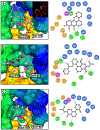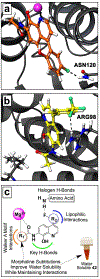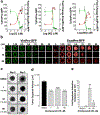Drug Design Targeting T-Cell Factor-Driven Epithelial-Mesenchymal Transition as a Therapeutic Strategy for Colorectal Cancer
- PMID: 31675229
- PMCID: PMC7723234
- DOI: 10.1021/acs.jmedchem.9b01065
Drug Design Targeting T-Cell Factor-Driven Epithelial-Mesenchymal Transition as a Therapeutic Strategy for Colorectal Cancer
Abstract
Metastasis is the cause of 90% of mortality in cancer patients. For metastatic colorectal cancer (mCRC), the standard-of-care drug therapies only palliate the symptoms but are ineffective, evidenced by a low survival rate of ∼11%. T-cell factor (TCF) transcription is a major driving force in CRC, and we have characterized it to be a master regulator of epithelial-mesenchymal transition (EMT). EMT transforms relatively benign epithelial tumor cells into quasi-mesenchymal or mesenchymal cells that possess cancer stem cell properties, promoting multidrug resistance and metastasis. We have identified topoisomerase IIα (TOP2A) as a DNA-binding factor required for TCF-transcription. Herein, we describe the design, synthesis, biological evaluation, and in vitro and in vivo pharmacokinetic analysis of TOP2A ATP-competitive inhibitors that prevent TCF-transcription and modulate or reverse EMT in mCRC. Unlike TOP2A poisons, ATP-competitive inhibitors do not damage DNA, potentially limiting adverse effects. This work demonstrates a new therapeutic strategy targeting TOP2A for the treatment of mCRC and potentially other types of cancers.
Figures










References
-
- Howlader N; Noone A; Krapcho M; Garshell J; Miller D; Altekruse S; Kosary C; Yu M; Ruhl J; Tatalovich Z; Mariotto A; Lewis D; Chen H; Feuer E; Cronin K. e. SEER Cancer Statistics Review, 1975–2013, National Cancer Institute; Bethesda, MD, http://seer.cancer.gov/csr/1975_2013/, based on November 2015 SEER data submission, posted to the SEER web site, April 2016. ((accessed Nov 7, 2004)).
-
- Clevers H Wnt/β-catenin signaling in development and disease. Cell 2006, 127, 469–480. - PubMed
-
- Chaffer CL; San Juan BP; Lim E; Weinberg RA EMT, cell plasticity and metastasis. Cancer Metast. Rev 2016. - PubMed
Publication types
MeSH terms
Substances
Grants and funding
LinkOut - more resources
Full Text Sources
Other Literature Sources
Chemical Information
Medical
Miscellaneous

